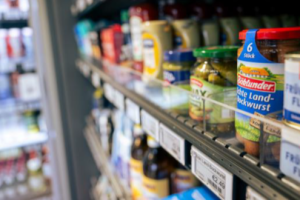Over the three months to the end of October, sales volumes fell by 1.1% when compared with the previous three months.
Food stores sales volumes fell by 0.3% in October, from being unchanged in September.
Supermarkets reported an increase in sales volumes of 0.2% over the month, while both specialist food stores (such as butchers and bakers) and alcohol and tobacco stores reported falls of 4.2% and 10.4% respectively.
Feedback from these retailers suggested consumers were buying cheaper products and prioritising important items, the ONS said.
Non-food stores sales volumes fell by 0.2%, following a 2.1% fall in September; retailers suggested that cost of living, reduced footfall and the wet weather in the second half of the month contributed to the fall.
When compared with their pre-pandemic level in February 2020, total retail sales were 16.9% higher in value terms, but volumes were 3.1% lower.
Retail sales volumes in October were at their lowest level since February 2021 when there were widespread and extensive restrictions to non-essential retail in England, Scotland and Wales.
Samantha Phillips, partner at business consultant McKinsey & Co, said: “Consumers held onto the purse strings in October. Despite possible opportunities for celebration from the Rugby World Cup and Halloween parties, there was a decline in food and drink volumes.
“While supermarkets have seen slight volume increases, which could be partly due to the slowing rate of grocery inflation, consumers held back from shopping for more expensive products from specialist stores.”
Oliver Vernon-Harcourt, head of retail at Deloitte, said: “October’s worse-than-expected retail sales performance represents further signs of weak consumer spending.
“This follows a prolonged period of economic strain on consumers’ personal finances, driving cautious spending in both essentials and discretionary categories.”
 Talking Retail Grocery and product news for independent retailers
Talking Retail Grocery and product news for independent retailers






